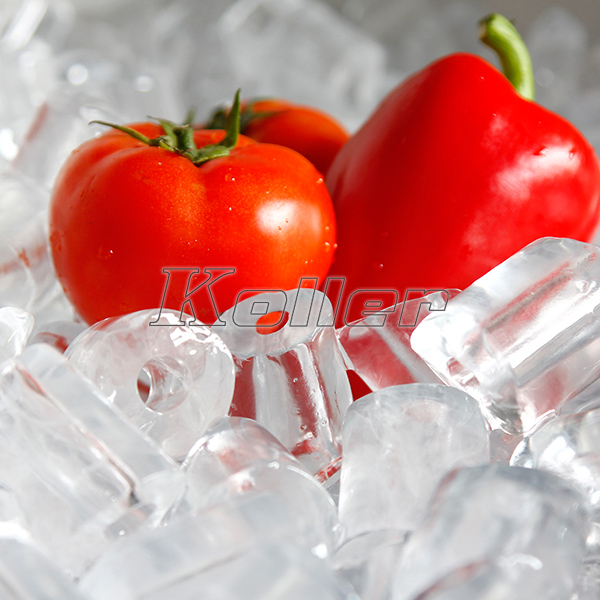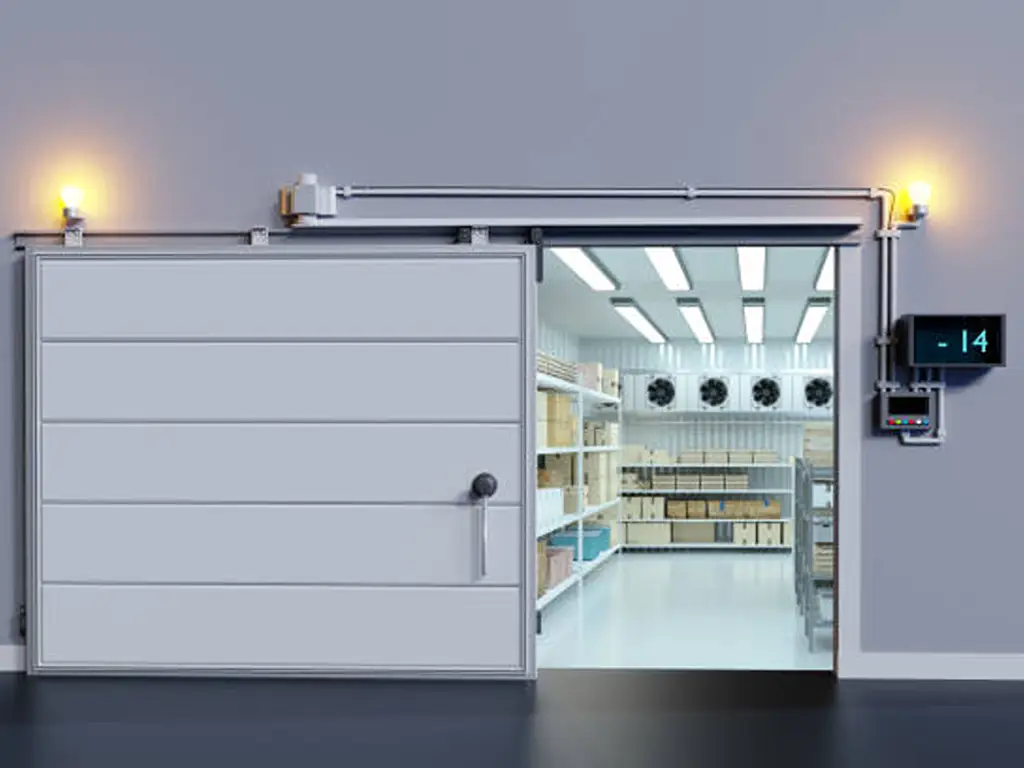
Macchine per il ghiaccio industriali, Conosciuto anche come industriali Icemakers, sono indispensabili per varie aziende, compresi i ristoranti, alberghi, supermercati, e ospedali. Generano quantità significative di ghiaccio in diverse forme e dimensioni, ad esempio cubetto di ghiaccio, ghiaccio in scaglie, piastra di ghiaccio, e ghiaccio del tubo.
Tuttavia, Queste macchine richiedono Pulizia e manutenzione coerenti per garantire il picco di prestazioni e igiene. Questo articolo approfondisce i modi adeguati ed efficaci per pulire e mantenere le macchine per la creazione di ghiaccio industriali.
Perché dovrebbe pulire & Mantenere

Il costo di pulizia e manutenzione macchine per la creazione di ghiaccio industriali deve essere considerato. Applicazioni della macchina per ghiaccio industriale nei ristoranti, alberghi, supermercati, e gli ospedali richiedono produzione di ghiaccio di alta qualità. Le macchine non sanitarie o inadeguatamente mantenute possono compromettere la qualità e la sicurezza prodotta, così come l'efficienza e la longevità delle macchine.
Ad esempio, sporcizia, scala, o la muffa può contaminare il ghiaccio, con conseguenti problemi di salute dei consumatori. Inoltre, Queste impurità possono danneggiare i componenti della macchina, Ridurre la capacità di raffreddamento e l'efficienza energetica. Quindi, Aderente a un normale programma di pulizia e manutenzione per le macchine industriali per la produzione di ghiaccio è cruciale.
Pulizia giornaliera

La pulizia quotidiana è il passo più fondamentale e vitale per mantenere le macchine industriali per la produzione di ghiaccio’ Pulizia e igiene. Implica la pulizia delle superfici della macchina e la disinfezione del cestino. Questo impedisce la polvere, sporco, o batteri dall'accumulare sulle macchine e influenzare la qualità del ghiaccio. La pulizia quotidiana aiuta anche a identificare eventuali problemi o problemi con i dispositivi e consente di intraprendere le azioni correttive di conseguenza.
Suggerimenti
- Scollegare l'alimentazione e l'approvvigionamento idrico prima della pulizia.
- Utilizzare un panno morbido o una spugna e un detersivo delicato per asciugare le macchine’ superfici esterne. Astenersi dall'uso di materiali abrasivi o sostanze chimiche dure che potrebbero graffiare o corrodere le macchine.
- Sciacquare le superfici con acqua pulita e asciugarle accuratamente con un asciugamano pulito.
- Sanitare con il cestino di stoccaggio del ghiaccio con Un disinfettante per alimenti Seguire le linee guida del produttore. Assicurarsi che il contenitore sia ben legato e essiccato Prima di riempirlo con il ghiaccio.
- Pulisci lo scoop o il distributore di ghiaccio con Acqua calda e sapone, e conservalo in un contenitore pulito.
- Ispezionare il filtro dell'acqua e sostituirlo se necessario.
Pulizia settimanale e mensile

Oltre alla pulizia quotidiana, macchine per la produzione di ghiaccio commerciali richiedono anche una pulizia più completa su base settimanale o mensile, A seconda dell'uso e della qualità dell'acqua.
Contiene Discalando le piastre per evaporatore e pulizia delle bobine del condensatore. Questi componenti sono responsabili del congelamento e del raffreddamento dell'acqua nel ghiaccio, Quindi devono essere liberi da qualsiasi accumulo di scala o sporco che potrebbe ostacolare le loro prestazioni.
Utensili
Una soluzione discendente, un pennello, un flacone spray, un secchio, un tubo, un cacciavite, Un aspirapolvere, e un panno morbido.
Guida passo-passo
- Scollegare l'alimentazione e l'approvvigionamento idrico prima della pulizia.
- Rimuovere il pannello frontale della macchina per accedere alle piastre evaporatori e alle bobine del condensatore.
- Mescolare il Soluzione discendente con acqua per istruzioni del produttore, e riempi un flacone spray.
- Applicare la soluzione alle piastre per evaporatore e lasciarla riposare 15 minuti.
- Utilizzare UN spazzola per strofinare qualsiasi scala o residuo dalle piastre.
- Sciacquare le piastre con acqua pulita usando un tubo o un secchio.
- Ripeti il processo per le bobine del condensatore.
- Utilizzo Un aspirapolvere per eliminare la polvere o lo sporco dalle bobine.
- Asciugare le piastre e le bobine con un panno morbido.
- REEATTACH Il pannello frontale della macchina.
Igienizzante & Disinfettare

Sanificare e disinfettare le macchine per la creazione di ghiaccio industriali sono anche fondamentali per garantire la loro igiene e sicurezza.
Sanificazione si riferisce a Ridurre il numero di microrganismi dannosi su una superficie a un livello sicuro. Al contrario, La disinfezione implica l'eliminazione di tutti gli organismi su una superficie. Sanificazione e disinfezione deve essere eseguita almeno due volte l'anno o più frequentemente se obbligato a regolamenti o standard locali.
Significa e disinfezione implica l'uso di prodotti per la pulizia adeguati e seguire attentamente le istruzioni del produttore. Ecco alcuni passaggi specifici su come disinfettare e disinfettare le macchine per la creazione di ghiaccio industriale:
Guida passo-passo
- Scollegare l'alimentazione e l'approvvigionamento idrico prima della pulizia.
- Scolare l'acqua rimanente o il ghiaccio dalla macchina.
- Rimuovere eventuali parti rimovibili, ad esempio vassoi, Cestini, o tubi, dalla macchina.
- Mescola una soluzione sanitaria o disinfettante con l'acqua secondo le linee guida del produttore. Puoi usare Prodotti di ammonio a base di cloro o quaternario A questo scopo. Assicurarti indossare guanti e protezione degli occhi Quando si gestiscono questi prodotti.
- Riempi un secchio con la soluzione e immergi tutte le parti rimovibili 10 minuti o come dirigente il produttore.
- Utilizzo un flacone spray Per applicare la soluzione sulle superfici interne della macchina, ad esempio Le piastre per evaporatore, le bobine del condensatore, Il cestino, E lo scivolo di ghiaccio.
- Consenti alla soluzione per sedersi per 10 minuti o come dirigente il produttore.
- Risciacqua tutte le parti e le superfici con acqua pulita e asciugarli completamente con un asciugamano pulito.
- Riassembla la macchina e riconnetti la potenza e l'approvvigionamento idrico.
Le potenziali conseguenze di sanificazione e disinfezione impropri possono essere gravi e costose. Per esempio, Il ghiaccio contaminato può causare intossicazione alimentare o altre malattie per i consumatori.
Inoltre, Le macchine sporche o ammuffite possono violare i codici e i regolamenti di salute, risultante in multe o sanzioni. Perciò, sanificare e disinfettare le macchine per la produzione di ghiaccio industriali regolarmente e correttamente è vitale.
Risoluzione dei problemi comuni

Anche con pulizia e manutenzione regolari, Le macchine industriali per la creazione di ghiaccio potrebbero essere ancora necessarie per migliorare il proprio funzionamento o qualità. Questi problemi includono l'accumulo di muffa o melma, bassa produzione di ghiaccio, ghiaccio nuvoloso o morbido, o rumori insoliti. Ecco alcuni suggerimenti per risolvere questi problemi:
Accumulo di muffa o melma
Questo può essere causato da scarsa qualità dell'acqua, sanificazione insufficiente, e disinfettare, o alta umidità.
Per prevenire questo problema, Usa un filtro dell'acqua, disinfettare e disinfettare frequentemente la macchina, e conservare il dispositivo in un luogo fresco e asciutto. Per affrontare questo problema, Pulire accuratamente l'appliance con una soluzione di disinfezione e sostituire le parti interessate, se necessario.
Bassa produzione di ghiaccio
Questo può essere causato da bassa pressione dell'acqua, Filtri dell'acqua sporca, Scala l'accumulo su piastre per evaporatore o bobine del condensatore, o componenti difettosi.
Per prevenire questo problema, Controllare l'approvvigionamento idrico, Sostituire regolarmente il filtro dell'acqua, Descrivi periodicamente le piastre e gli anelli, e ispezionare le parti per eventuali danni o usura. Per affrontare questo problema, regolare la pressione dell'acqua, Pulire o sostituire il filtro, Descrivi le piastre e le bobine, o riparare o sostituire eventuali componenti difettosi.
Ghiaccio nuvoloso o morbido
Questo può essere causato da Alto contenuto minerale in acqua, bolle d'aria, Livelli bassi del refrigerante, o alte temperature ambientali.
Per prevenire questo problema, Usa un filtro dell'acqua, elimina l'aria dalla linea di galleggiamento, Controlla lo stato del refrigerante, e conservare la macchina in un posto fresco. Per affrontare questo problema, Installare o sostituire un filtro dell'acqua, Sanguina l'aria dalla linea di galleggiamento, ricaricare il livello del refrigerante, oppure sposta la macchina in una posizione più fredda.
Rumori insoliti
Questo può essere causato da Parti sciolte o rotte, vibrazione di tubi o tubi, o installazione impropria.
Per prevenire questo problema, Stringere o fissare parti sciolte, Cuscini eventuali tubi o calze vibranti, e installare la macchina secondo il produttore di macchine per la produzione di ghiaccioIstruzioni. Per affrontare questo problema, Sostituire le parti rotte, isolare i tubi o i tubi vibranti, o reinstallare correttamente l'appliance.
Servizio e riparazione professionale

Mentre alcuni problemi minori possono essere risolti utilizzando semplici tecniche di risoluzione dei problemi, Possono necessaria problemi più complessi o sostituzioni delle parti servizio professionale E Riparazione della macchina per ghiaccio commerciale.
Trova un'assistenza professionale
Ad esempio, UN produttore di ghiaccio industriale può richiedere assistenza professionale se si verifica problemi come perdite di acqua o refrigerante, fare costantemente rumori forti, Non riuscire a produrre ghiaccio, o visualizzare i codici di errore sul pannello di controllo. In questi casi, contattando un fornitore di servizi qualificato per assistenza con il tuo macchina per la creazione di ghiaccio industriale è consigliabile.
Suggerimenti
Quando si seleziona un fornitore di servizi per la riparazione della macchina per la creazione di ghiaccio industriale, Dovresti considerare la loro esperienza e le loro certificazioni.
Cerca un fornitore con ampie conoscenze e competenze nella riparazione di varie macchine per la creazione di ghiaccio industriali, ad esempioMacchina per la produzione del ghiaccio a sfera, macchine per la produzione di ghiaccio a cubetti, macchine per la produzione di ghiaccio in scaglie, macchine per la produzione di ghiaccio a piastre, E macchine per la produzione di ghiaccio a tubi.
Anche, Cerca un fornitore con certificazioni pertinenti da organizzazioni affidabili, come Nate (Eccellenza del tecnico nordamericano), EPA (Agenzia per la protezione ambientale), e Icema (Associazione internazionale di macchine per ghiaccio commerciale).
Queste certificazioni indicano che il fornitore ha soddisfatto determinati standard di qualità e professionali nel loro campo.
Conclusione

Le macchine per la creazione di ghiaccio industriali sono beni preziosi per le aziende che richiedono grandi quantità di ghiaccio quotidianamente. Tuttavia, pulizia adeguata e manutenzione sono necessari per garantire prestazioni e igiene ottimali.
Seguendo un normale programma di pulizia e manutenzione, Risoluzione dei problemi di problemi comuni, e alla ricerca di servizi e riparazioni professionali quando necessario, Puoi mantenere le macchine per la creazione di ghiaccio industriali funzionanti senza intoppi ed efficiente per un periodo prolungato.

















